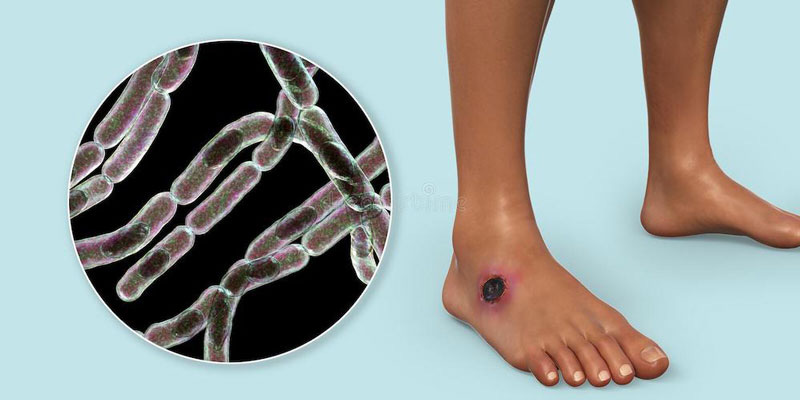The Center for Disease Control (CDC) of the mountainous province of Dien Bien in northern Vietnam on Monday reported a suspected human anthrax case, a two-year-old child who did not come in contact with potential sources of the disease.
T.T.D., 2, living in Tuan Giao District, experienced symptoms such as fever, vomiting, and the development of a purple-black rash on their left arm, which was accompanied by itchiness, according to the Dien Bien CDC.
Within a span of one to two days, the purple-black nodule grew in size and became filled with pus.
In an attempt to alleviate the condition, D.’s family sought assistance from an acquaintance in Tua Chua District to provide traditional medication, but it proved ineffective.
The family took the child to the Medical Center of Tua Chua District on Sunday morning.
Later that day, the patient was transferred to Dien Bien General Hospital, where he was diagnosed with pneumonia caused by suspected human anthrax.
Anthrax is a highly infectious disease caused by Bacillus anthracis, a type of gram-positive, rod-shaped bacteria, according to the U.S. Centers for Disease Control and Prevention.
It is found naturally in soil and affects domestic and wild animals globally.
Humans can contract anthrax by interacting with infected animals or contaminated animal products.
This disease can lead to severe illness in both humans and animals.
“D.’s family exclusively consumed pork and vegetables, abstaining from beef,” said a representative of the Dien Bien CDC.
“There is no presence of anthrax-infected cattle in the vicinity, and they have not had any contact with people afflicted by anthrax.
“Presently, authorities are investigating the epidemiological aspects of the case to identify and manage the sources of pathogens.”
Dien Bien Province had earlier detected three outbreaks of human anthrax disease with 13 cases, all of which were linked to the butchering and consumption of buffaloes and cows.
The Ministry of Health assessed that there is an observable rise in anthrax cases in the northern mountainous region when compared to the average number of infections over the past five years.
This is particularly concerning in areas where the pathogens persist for extended periods, thus heightening the risk of transmission to humans.
To address this, the ministry has advised local authorities to enhance communication efforts regarding the dangers of anthrax and implement preventive measures.
Public awareness campaigns should discourage the slaughter, consumption, use, and trade of products originating from infected or potentially infected cattle.
Like us on Facebook or follow us on Twitter to get the latest news about Vietnam!





















































